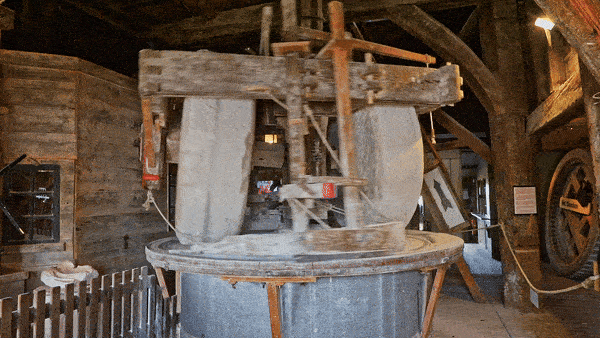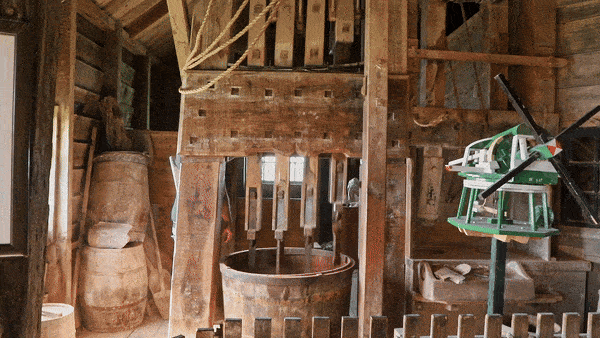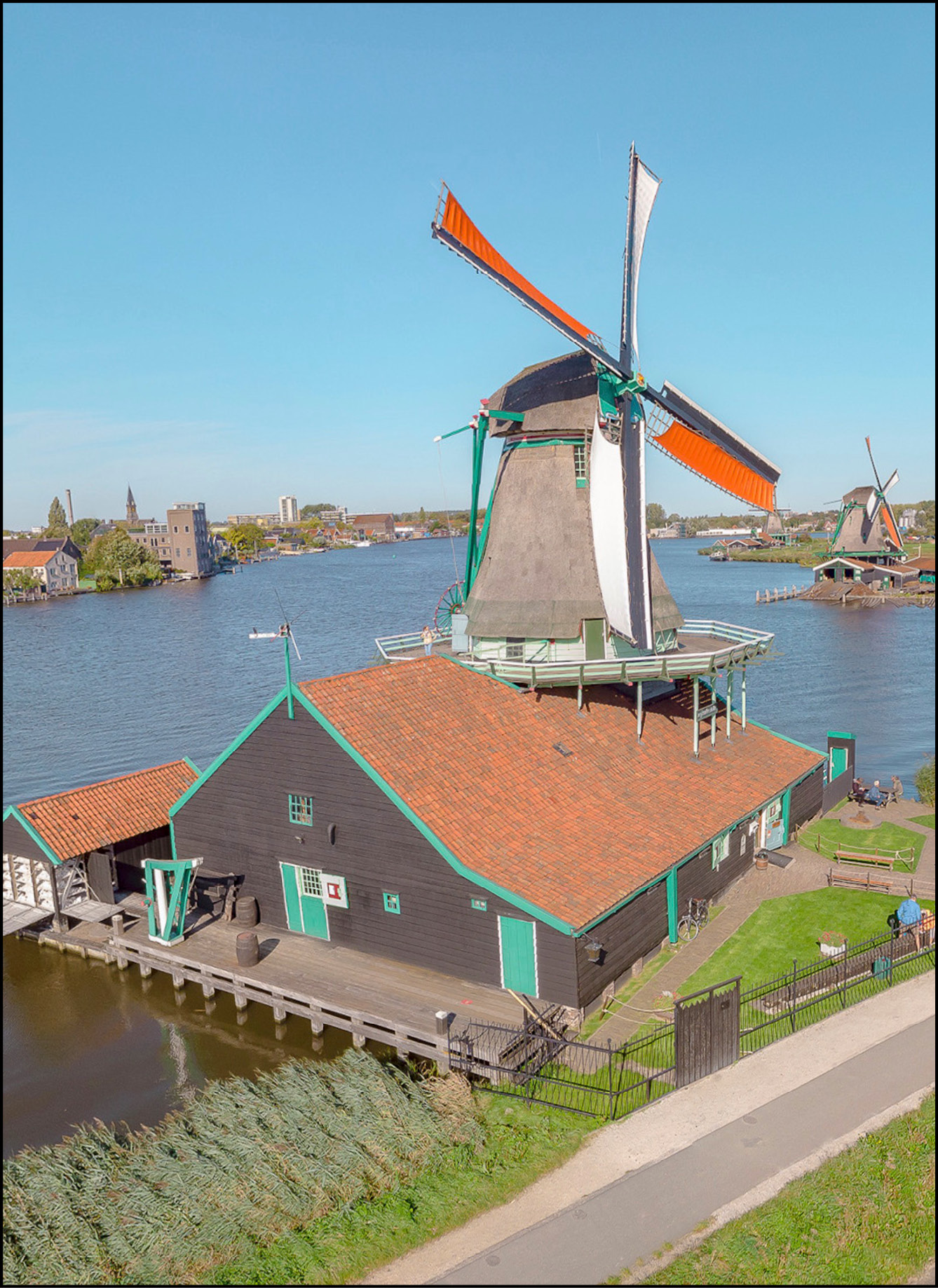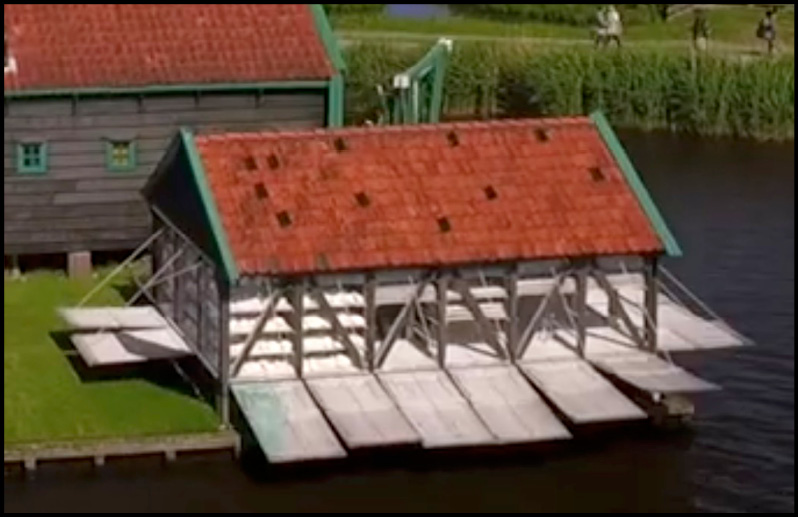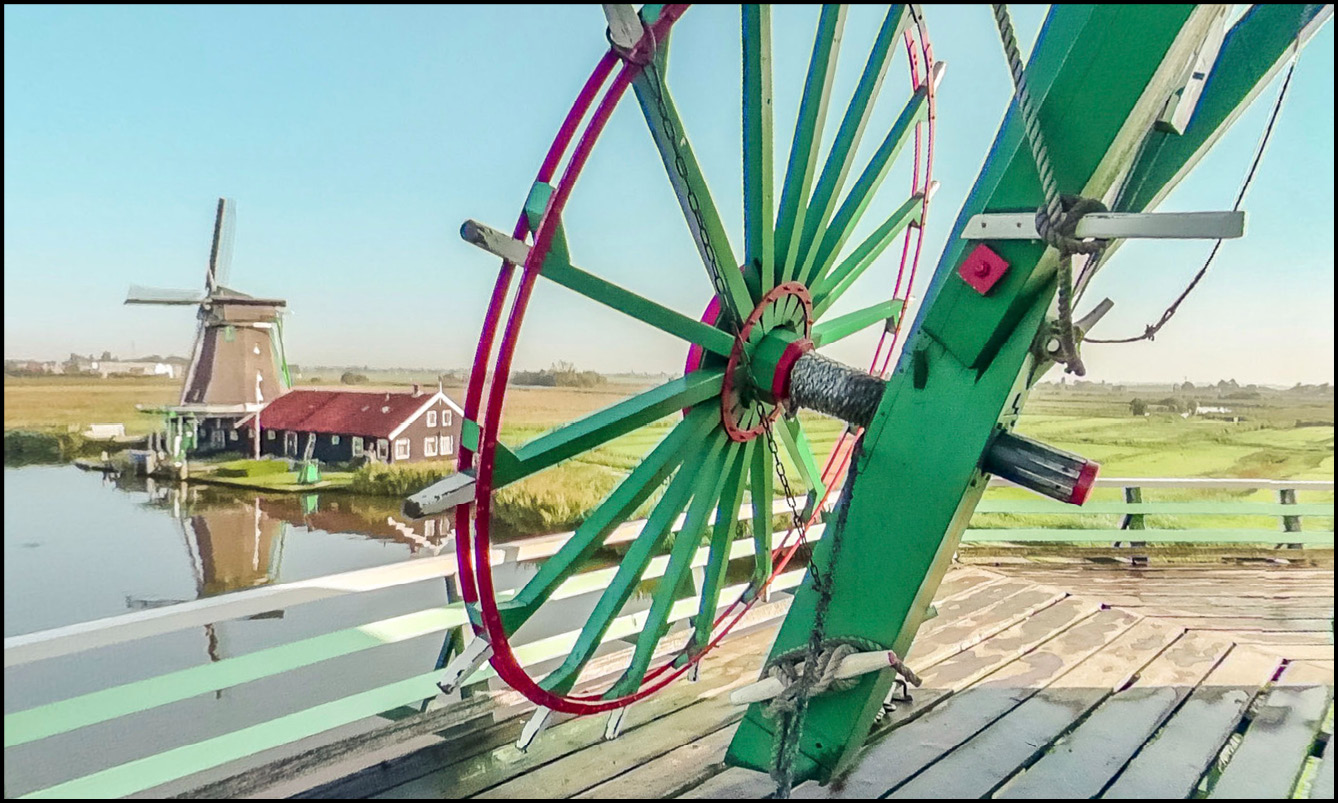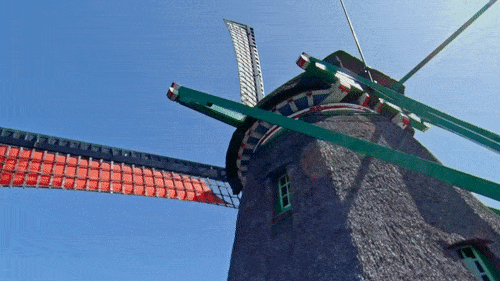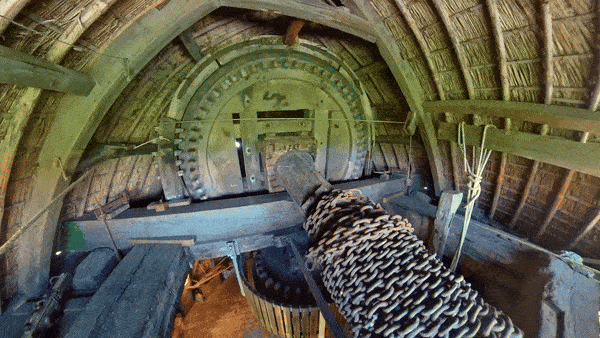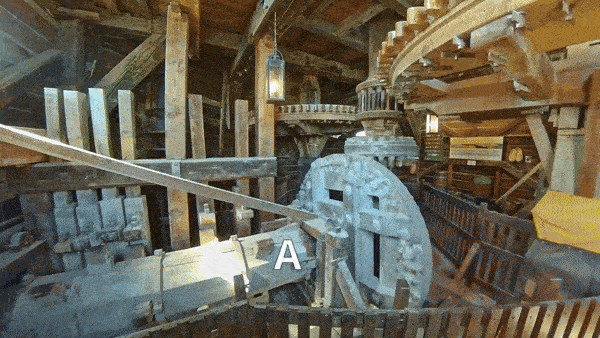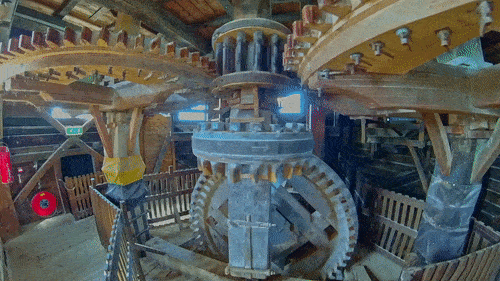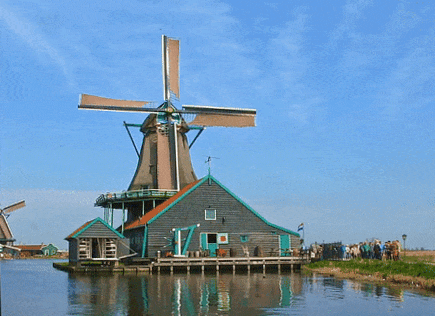
Paint mill from 1782
Kalverringdijk, Zaanse Schans, Zaandam, NL
This mill grinds tropical woods for dyeing wool and silk. It also grinds chalk, which is used as a filler and for the chalk lines on football pitches, and pigments such as ochre and umber, with which the painter can make his own paint.
1. Chalk grinding begins in the drying shed, where the shutters are open during the day to allow the chalk to dry in the wind.
2. The large pieces of paint wood cannot go straight under the grindstones, so they must first be reduced in a container where four chisels pound on them until the right fineness is achieved.
3. It is then ready to be ground into a fine powder under the large grinding stones and then sifted in a rotating drum. The pigment was stored in large sacks. Here it is sold in small bags.
4. All these operations require a lot of energy, which is provided by the wind. In this mill, only the upper part rotates. Only the cap with the sails is turned by the wind. There is a tail attached to the cap which can be turned by a wheel on the gallery.
5. Inside the cap is a large cog wheel attached to the sails, surrounded by wooden brake shoes to stop the mill. This first cogwheel drives a small cogwheel connected to the central spindle. This spindle brings all the power down.
6. In the first attic you can see a large number of wooden gearwheels. There, the central spindle, which is driven at the top of the dome and turns the millstones below, drives a horizontal beam (A) that makes the chisels pound and a second cog (B) that can be moved to the side to turn the small millstones in the “red chamber” below. These millstones are in a separate room so that the dust does not contaminate the other pigments. After a major repair, this room looks quite clean, but previously everything was covered in ochre pigments, as shown in the photo.
7. The wind is variable. In light winds the mill turns too slowly for the production process. The miller stops the mill and sets the sails on each wing to catch more wind and make the mill turn faster and more powerfully. In summer the sails are 2x red and 2x white, in winter the mill runs with 4 brown sails.
8. All the windmills you see here on the banks of the Zaan are maintained by the Zaansche Molen Society. Your visit to this mill helps us to preserve this industrial heritage. Don’t hesitate to visit another windmill or the Windmill Museum.
Thank you for your visit.

